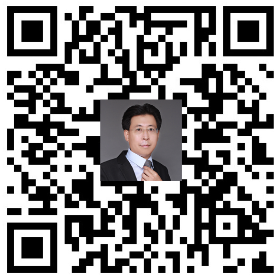| C. | COMMENTARY |
| (This commentary is not a legally binding statement and it does not form part of the Ruling.) |
|
|
| 1. | Whether the Family holds at least 95% of the beneficial interests in Company X and its ESF Office |
| (a) | In this case, the beneficial interest in Company A and Company W (i.e. the ultimate parent company of Company X and its ESF Office) is held by members of the Family, Trust F and Foundation G. |
| (b) | Trust F is a specified trust within the meaning of section 8(22) of Schedule 16E to the IRO. Members of the family are the specified beneficiaries of Trust F who are entitled to benefit from the entire trust estate. Thus, they can be taken to have an entire beneficial interest in Trust F with reference to section 8(9) of Schedule 16E to the IRO. |
| (c) | A foundation resembles something of a hybrid between a company and a trust and is commonly used as a holding entity to manage assets transferred by the founder for family or charitable purposes in the civil law jurisdictions. In the present case, in determining the extent of beneficial interest that a member of the Family has in Foundation G under section 8 of Schedule 16E to the IRO, it is necessary to ascertain the legal form of Foundation G. In view that Foundation G is a legal entity that does not have any shareholder but only beneficiaries, it should be regarded as an entity that is not a corporation, a partnership or a trust and thus, section 2(d) of Schedule 16F to the IRO applies to this case accordingly. As members of the Family are the only beneficiaries under Foundation G and they are entitled to the foundation assets (i.e. capital of the entity) and the foundation income (i.e. profits of the entity), they can be regarded as having an entire beneficial interest in Foundation G according to section 2(d)(i) or (iii) of Schedule 16F to the IRO. |
| (d) | Based on the information set out in section 1 of Part B above, it is highly probable that at all times during the basis period for the year of assessment 2023/24, members of the Family have at least 95%, in aggregate, of the beneficial interest in Company A and Company W, which in turn have at least 95%, in aggregate, of the beneficial interest in Company X (i.e. the FIHV), Company B (i.e. the ESF Office for the Transitional Period) and Company Z (i.e. the ESF Office for the Ongoing Period) respectively. |
|
|
| 2. | Whether Company X and its ESF Office are normally managed or controlled in Hong Kong |
| (a) | The concept of “normally managed or controlled in Hong Kong” does not require that both management and control be exercised in Hong Kong. “Management” refers to management of daily business operations, or implementation of the decisions made by top management, etc. “Control” refers to control of the whole business at the top level, including formulating the central policy of the business, making strategic policies of the company, choosing business financing, evaluating business performance, etc. The “management” or “control” of an FIHV and ESF Office may be conducted in more than one place. However, provided that the FIHV and ESF Office are normally managed or controlled in Hong Kong, the conditions regarding the normal management or control requirement will be considered as being satisfied. |
| (b) | In this case, Company X and its ESF Offices are considered to be normally managed or controlled in Hong Kong having regard to the following information: |
|
| (i) | Company X and the respective ESF Offices share the same business address in Hong Kong and have common directors. |
|
| (ii) | Company X was managed by Company B during the Transitional Period and is managed by Company Z during the Ongoing Period. The investment activities as defined in section 1(1) of Schedule 16E to the IRO were/have been carried out by the employees of Company B and Company Z in Hong Kong. |
|
|
| 3. | Whether the substantial activities requirement is met in relation to Company X |
| (a) | In determining whether an adequate number of full-time qualified employees has been employed, and an adequate amount of operating expenditures has been incurred, for carrying out the investment activities for Company X under section 10(1)(b) and (c) of Schedule 16E to the IRO, the following issues have been considered: |
|
| (i) | the number of FIHVs managed by the ESF Office; |
|
| (ii) | the investment strategies of Company X and Company Y; |
|
| (iii) | asset types held by Company X and Company Y; |
|
| (iv) | investment activities undertaken by the ESF Office; |
|
| (v) | details of employees employed in Hong Kong (e.g. experience, qualifications, position held and duties performed); |
|
| (vi) | amount and types of the operating expenditure (e.g. fixed or variable cost) incurred in Hong Kong. |
| (b) | Having regard to the totality of facts and circumstances of this case, it is considered that the actual number of qualified employees of the respective ESF Offices and the amount of operating expenditure incurred in Hong Kong for carrying out the investment activities can adequately and reasonably demonstrate the fulfilment of the substantial activities requirement. |
|
|
|
| 4. | Whether the ESF Office has met the safe harbour rule |
| (a) | An ESF Office is required to satisfy the safe harbour rule under section 3 of Schedule 16E whereby at least 75% of the ESF Office’s assessable profits should be derived from the services provided to specified persons of the family. To provide for flexibility, an ESF Office may choose to apply either the 1-year or multiple-year (subject to a cap of 3 years) safe harbour rule. An ESF Office falls within: (i) the 1-year safe harbour rule if the Family Office Management Profits (“FOMP”) percentage of the ESF Office for the subject year is more than or equal to 75%; or (ii) the multiple-year safe harbour rule if the average FOMP percentage of the ESF Office is more than or equal to 75%. FOMP refers to the aggregate amount of the management profits of the ESF Office in the basis period for the year of assessment that are derived from services provided to any one or more specified persons of the family. The services concerned are not limited to investment services. |
| (b) | In this case, Company B provided services to Company X and other group companies during the year of assessment 2023/24 and received service fees in return. Those group companies are not specified persons within the meaning in section 2(8) of Schedule 16E to the IRO. A proforma profit and loss account of Company B in respect of the basis period for the year of assessment 2023/24 was provided to substantiate that the safe harbour rule would be met whereby at least 75% of the assessable profits of Company B were derived from the services provided to Company X during the year of assessment 2023/24. |
| (c) | Company Z is a dedicated family office solely providing services to Company X and Company Y. It is expected that Company Z will meet the safe harbour rule during the year of assessment 2023/24 and subsequent years of assessment. |
|
|
|
| 5. | Whether the anti-round tripping provisions apply to the arrangement |
| (a) | Sections 22 and 23 of Schedule 16E to the IRO provide that the assessable profits of an FIHV or an FSPE are deemed as assessable profits of the resident person if the resident person: (1) has (either alone or jointly with its associate) not less than 30% of the beneficial interest in the FIHV or (2) has any beneficial interest in the FIHV and the FIHV is an associate of the resident person. The anti-round tripping provision does not apply to a resident person which is a resident individual, an ESF Office or a specified entity within the meaning of section 20(3) of Schedule 16E to the IRO. |
| (b) | In the present case, Company W is a resident person having 100% of the beneficial interest in Company X. Nevertheless, Company W is a passive investment holding vehicle and does not carry on any trade or business. Also, members of the Family have a direct and indirect beneficial interest in Company W which in turn has a 100% direct beneficial interest in Company X. Thus, Company W can be regarded as a specified entity under section 20(3) of Schedule 16E to the IRO. The anti-round tripping provisions will not operate to regard the assessable profits of Company X and Company Y as assessable profits of Company W. |
|
|
|
| 6. | Whether the anti-avoidance provisions apply to the arrangement |
| (a) | Sections 26 and 27 of Schedule 16E provide that if the Commissioner is satisfied that (i) the main purpose, or one of the main purposes of an FIHV or FSPE in entering into an arrangement, or (ii) the main purpose, or one of the main purposes of a person making a transfer of any asset/business to the FIHV or FSPE is to obtain a tax benefit, whether for the FIHV or FSPE or another person/entity, the tax concession will not apply to the FIHV or FSPE concerned. The purpose of the main purpose test is to prevent tax abuse (e.g. taxpayers who seek to take advantage of the tax concessions or treaty benefits without any commercial reasons and business substance established in Hong Kong). It would not operate to deny tax concessions for the vast majority of genuine businesses with core income generating activities carried out in Hong Kong. Whether the main purpose or one of the main purposes of setting up a business in Hong Kong is to obtain a tax benefit is a question of fact. Before reaching a conclusion under the main purpose test, all relevant facts and circumstances have to be considered. |
| (b) | In this case, a restructuring exercise was conducted under which assets of the Family were transferred from Group A to Group B. The purpose of such transfer is to distinguish the family wealth from the family business of Group A such that the assets of the Family can be well-managed by a family office within Group B. Coupled with the circumstances that the transfers of assets were carried out on an arm’s length basis while the transferors are chargeable to tax in respect of the assessable profits arising from the transfers, it is therefore considered that sections 26 and 27 of Schedule 16E to the IRO, as well as sections 61 and 61A of the IRO, should have no application to the present case. |





 打电话
打电话
 加微信
加微信




 微信分享
微信分享 打印
打印



(大侠既然来过,何妨留下墨宝) 要回复请先 登录 或 注册